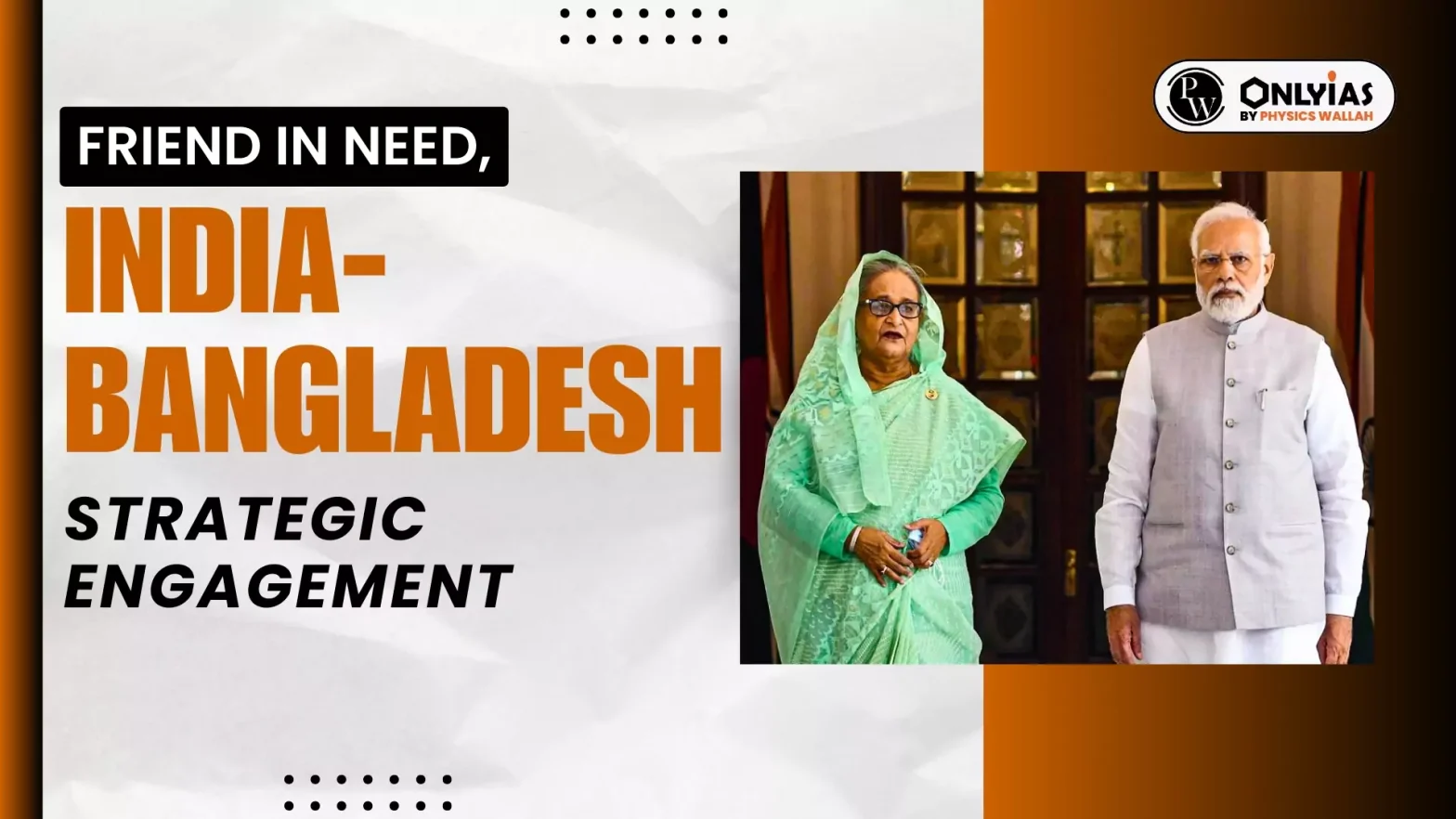New Delhi and Dhaka have signed a comprehensive bunch of collaborations that includes pledging to begin negotiations on a Comprehensive Economic Partnership Agreement (CEPA), deciding to launch a medical e-visa facility for Bangladeshis and agreeing to send a technical team to discuss the Teesta river water-sharing, besides announcing the opening of an Assistant High Commission in Rangpur.
India-Bangladesh Strategic Engagement
Additional goodies in the bouquet include new train and bus services, export of 40 MW power to Bangladesh via the Indian grid, an inland container depot at Sirajganj and 350 training slots for Bangladeshi police officers.
Enroll now for UPSC Online Course
- For India, four major imperatives have significantly driven the nation’s increased strategic engagement with Bangladesh:
- Improving the country’s economic standing.
- Attending to the healthcare requirements of Bangladeshis.
- Increasing India’s presence in the region.
- Attempting to counter China’s increasing influence in Bangladesh.
- In office since 2008 and earlier heartily praised for leading her country’s economic and social development, Bangladesh’s Prime Minister Sheikh Hasina is now facing difficulties in post-pandemic recovery.
- Her plan to use the bilateral relationship to address these issues includes the outreach to New Delhi in a major way.
- It makes sense that New Delhi is responding to her advances with a bit more warmth than usual this time, in part because of Beijing’s looming shadow in the background.
- Prime Minister Narendra Modi and Bangladesh PM Sheikh Hasina deepened their partnership with a “futuristic vision” for transformative cooperation during the latter’s two-day visit to India from June 21.
- India holds a special place in Bangladesh’s history, particularly owing to the 1971 Liberation War wherein India played a key role.
- However, relations between the nations became tense during military rule in the mid-1970s, marred by anti-India sentiment.
- But the shared history has helped forge a strong bond, with Modi’s tenure since 2014 giving a new fillip to bilateral ties.
- Earlier, a significant shift occurred in 1996, when Hasina took over as the Prime Minister for the first time; since then, bilateral relations have steadily improved.
- Since 2019, the two leaders have met on 10 occasions, ushering in an era of remarkable transformation and strengthening bonds.
- Prime Minister Hasina, who began her fourth consecutive term in January 2024, joined six other world leaders at Modi’s swearing-in ceremony on June 9, 2024.
- However, challenges persist, such as border management, illegal migration, the National Register of Citizens, Rohingya and river water sharing, necessitating ongoing dialogue.
- Bangladesh has established an island for the persecuted Rohingyas and seeks India’s help in persuading Myanmar to repatriate the displaced minorities.
- The Modi-Hasina partnership has the potential to further cement India-Bangladesh relations, navigating these challenges and leveraging their shared vision for mutual prosperity.
Check Out UPSC Modules From PW Store
Conclusion
The Modi-Hasina partnership can solidify India-Bangladesh relations, addressing challenges and enhancing cooperation for mutual prosperity in the face of regional dynamics.
![]() 24 Jun 2024
24 Jun 2024

